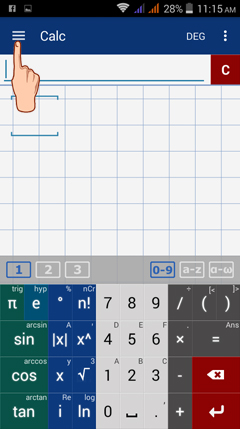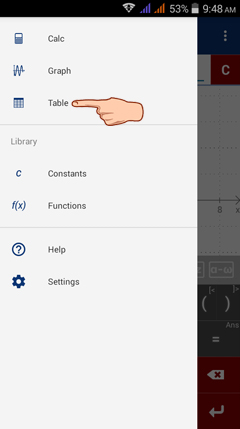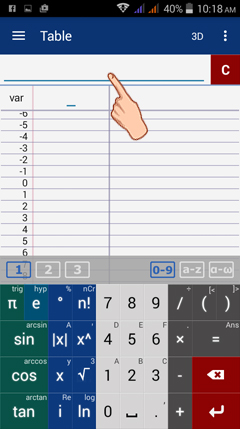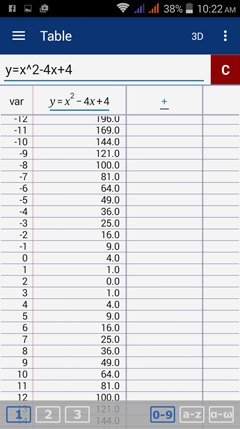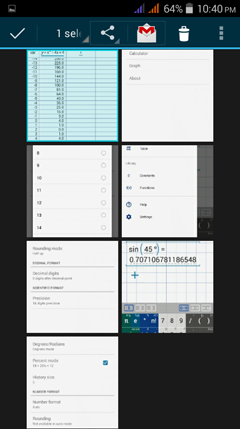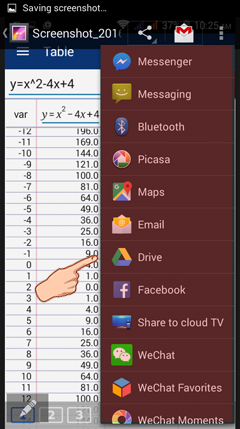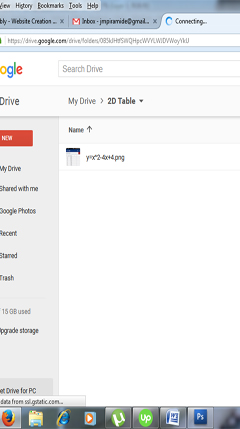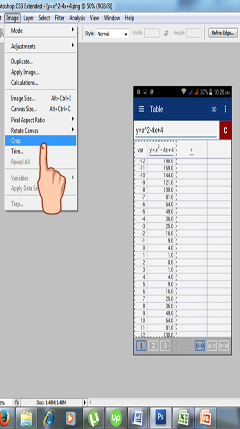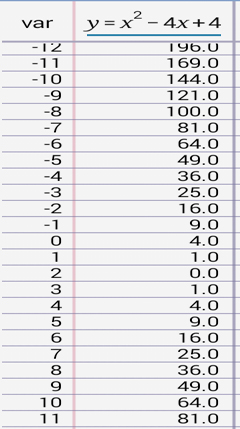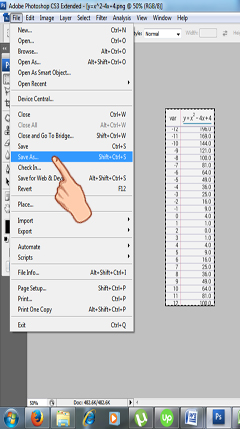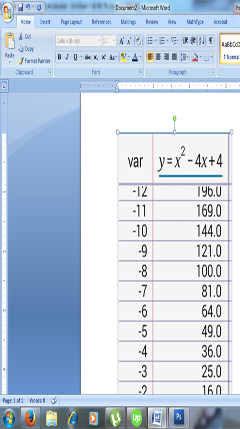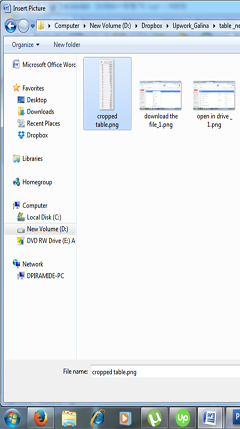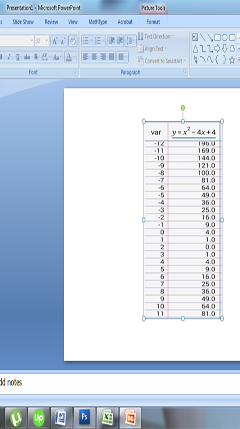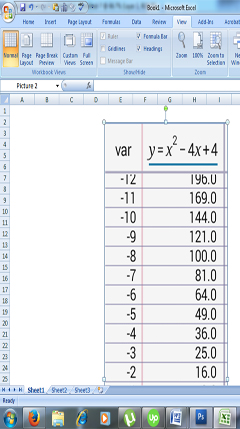9. How to Transport Table to other Platforms?
Oftentimes, when we are asked to sketch the graph of a function/equation, we first make a table of values, plot the points on the coordinate system and connect the points with either a line or a smooth curve. The table capability of this app can serve for this purpose. Instead of making your table in either word or excel, you can just key-in the equation/function on the table window. . Specifically, you can do the following steps:
1) To go to the table window of the app, tap the menu button on the upper left corner of the screen.
2) Tap TABLE.
3) Key-in the equation/function in the input field. The values of y are automatically displayed on the second column.
4) Make a screenshot of the table display. Make sure the table displays your desired sets of ordered pairs.
5) In you photo gallery, look for the screenshot folder and search for the table screenshot. Tap that screenshot to open.
6) Save/send the screenshot through your desired interface: messenger, facebook, bluetooth, email, drive, etc.
The succeeding screenshots below illustrates the steps for transporting the table through google drive.
The succeeding screenshots below illustrates the steps for transporting the table through google drive.
7) Tap the drive icon. In the "save to drive" window, you will be asked to choose a folder and name the file you want to save.
You may or may not create the folder but you have to name the file for easy reference later. Then, tap SAVE.
Make sure you're online to save the file in your drive.
You may or may not create the folder but you have to name the file for easy reference later. Then, tap SAVE.
Make sure you're online to save the file in your drive.
8) Open your drive. Click on the folder where you saved the file.
9) Open and download the file using your desired platform: photo viewer, windows picture manager, adobe photoshop, etc.
10) Depending on which platform you used in step 9, you can now adjust, crop, or edit the table before transporting or pasting it to your desired location: word, excel, powerpoint, etc.
11) Save the file to a location you preferred.
12) Open the platform/location where you want to insert or copy the table. Go to insert then picture and choose the picture from the location where you saved the edited file. See samples below.

